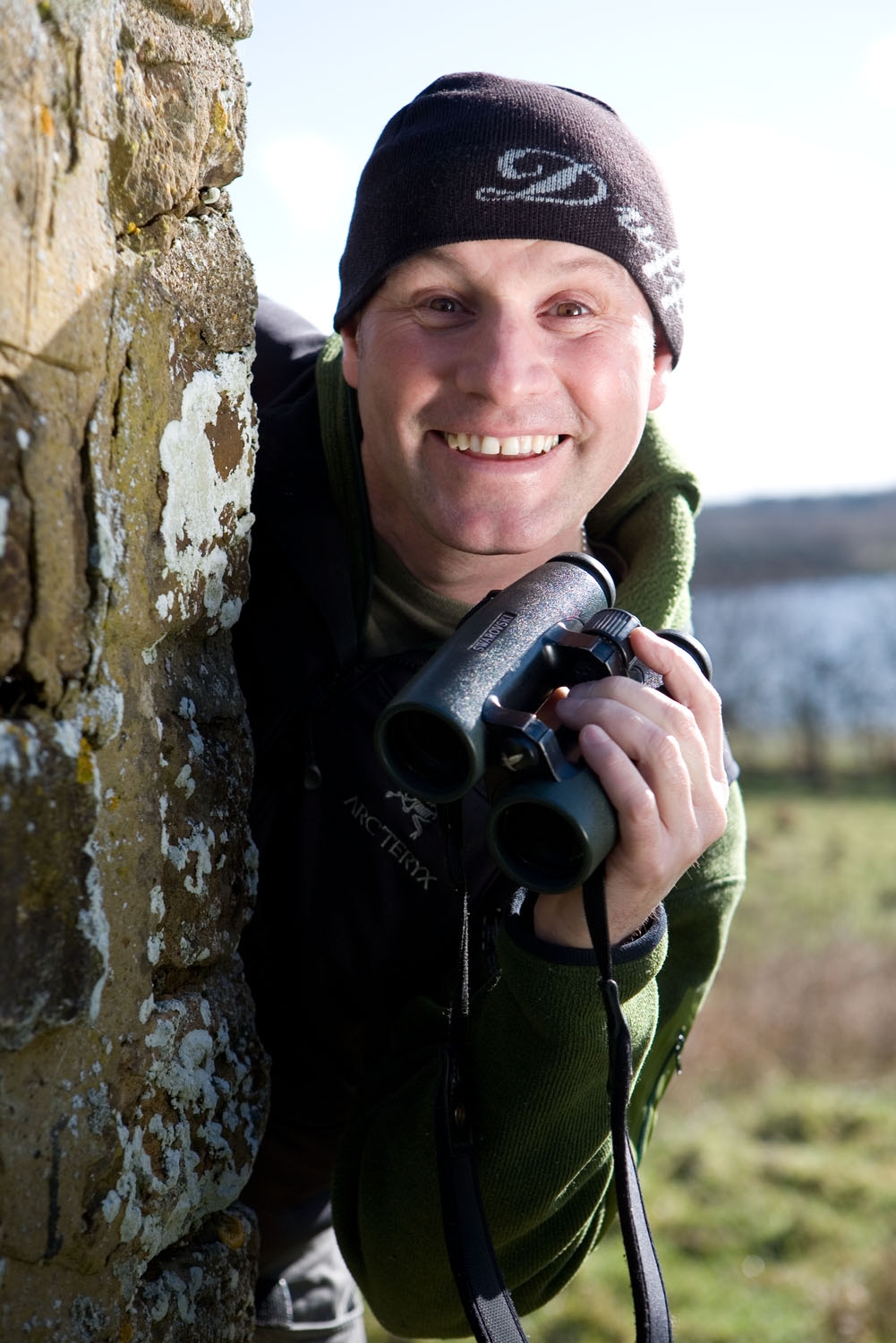Infamous for wounding and killing King Robert Baratheon in HBO’s Game of Thrones TV series (adapted from George R R Martin’s Song of Ice and Fire book series), wild boar are impressive mammals. They were hunted to extinction in the UK by the end of the thirteenth century, but have been accidentally (and sometimes purposefully) released.
What are wild boar?
Wild boar (also known as wild swine and Eurasian wild pig) is a bulky medium-sized mammal, belonging to the Suidae family.
Where are wild boar found?
In the UK, the distribution of wild boar is limited to where they have escaped from wild boar farms, with the largest populations in the Forest of Dean and Kent/Sussex. They are also found in Dorset, Devon and Scotland.
The wild boar was a very widespread species throughout much of Europe and Asia.
What do boar look like?
Considered the wild ancestors of our modern European pigs, boar can reach quite a size. Weighing in at between 60 and 100kg, an adult male can stand up to 80cm at the shoulder and may reach close to 200cm in length when its (crucially) straight tail is tacked on the end. Endowed with a large head, long snout and relatively small ears, the boar’s coarse coat has a softer under-layer. The males also have a distinct ‘Mohican’ mane of bristles running from their neck to the middle of their back, and their characteristic tusks become visible from about two years of age. Mike Dilger
How can I see a wild boar?
Mammalogists often spend far more time looking for signs than observing the animals themselves, and this is especially the case with wild boar. A familiarity with their tracks, wallow-holes, ‘rubbing trees’ and disturbed ground builds a picture of their movements.
- Tracks: They are cloven and up to 7cm wide. Look for two distinct and widely spaced points produced by their dew claws at the rear end of each print.
- Wallow holes: Wild boar do not possess sweat glands so wallowing in mud is vital for keeping cool. Large, oval-shaped depressions are frequently smooth where boar have been rolling.
- Rubbing trees: Boars will use trees to help remove insects, parasites and moulting hair.
- Disturbed ground: A distinctive sign of wild boar is a severely rooted pasture field or roadside verge where they have overturned turf in search of worms and grubs. The absence of scratch marks from badgers’ claws and existence of hoofed footprints should help confirm wild boar as being responsible.
But for those keen to catch a glimpse, dusk is undoubtedly the best time. Wild boar have a heightened sense of smell and hearing, so silence, patience and minimal personal scent are essential. Woodland rides stay lighter for longer and often give good visibility. Mike Dilger
What do wild boar eat?
Omnivorous by nature, the majority of a wild boar’s diet consists of roots, bulbs, seeds, nuts and terrestrial invertebrates. Most of this is located by ‘ploughing’ the woodland floor, which frequently results in an unsightly appearance, but this act of breaking up the sward can challenge the monopoly of bracken, for example, and provide space for wildflowers, shrubs and trees to germinate. The disturbed ground will additionally give burrowing bees and beetles a head start and help unearth food for hungry birds during the winter months. Mike Dilger
What is the scientific name of the wild boar?
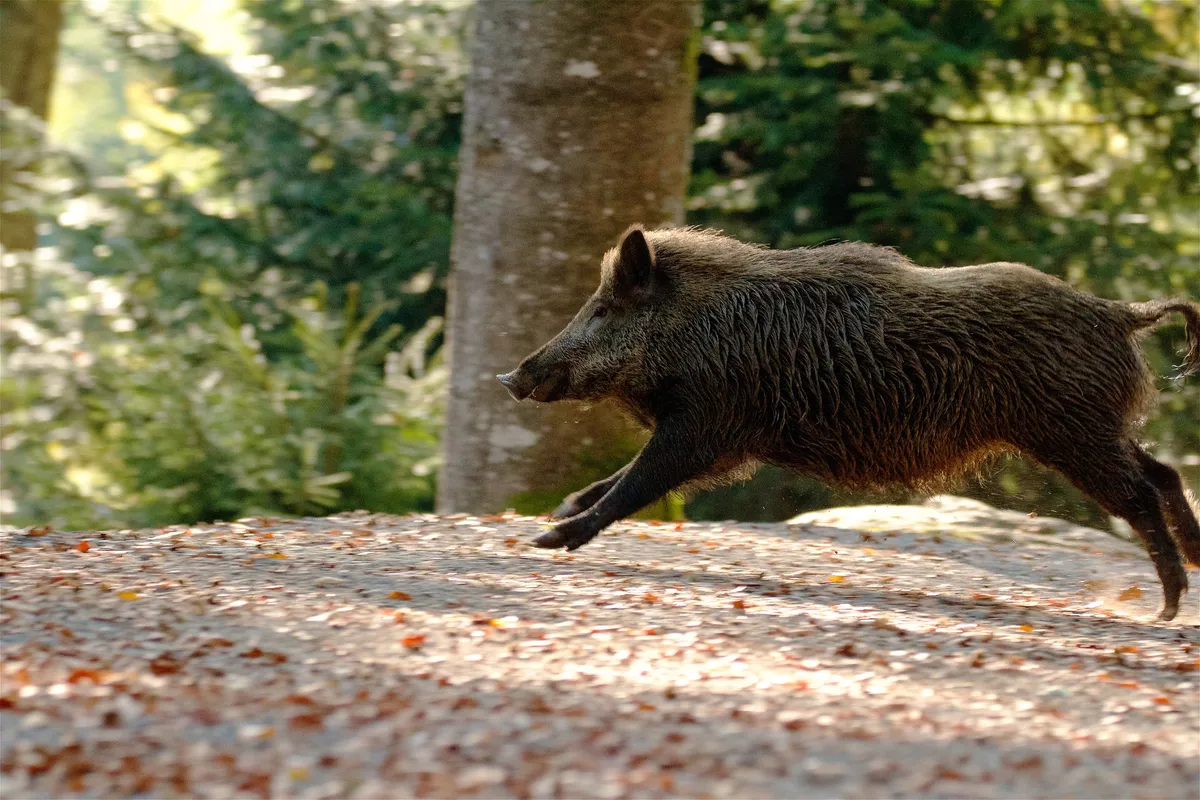
The scientific name of the wild boar is Sus scrofa.
There are more than 10 recognised subspecies, with Sus scrofa scrofa found across much of continental Europe.
Are wild boar bad for bluebell woodlands?
It depends on your point of view. Wild boar can be enthusiastic consumers of bluebells, both the bulbs and the shoots. In the Forest of Dean, some residents claim they have devastated bluebell woods. However, the bluebell woods we adore may in essence be a modern invention.
Historically, greater woodland plant biodiversity and disturbance from wild boar and other large animals mean that bluebells probably grew less densely than they do now. Researchers have also found that rooting by boar encourages bluebell germination, perhaps by making soil conditions more favourable. Provided that boar do not frequently return to root the same area, bluebell stands should endure.
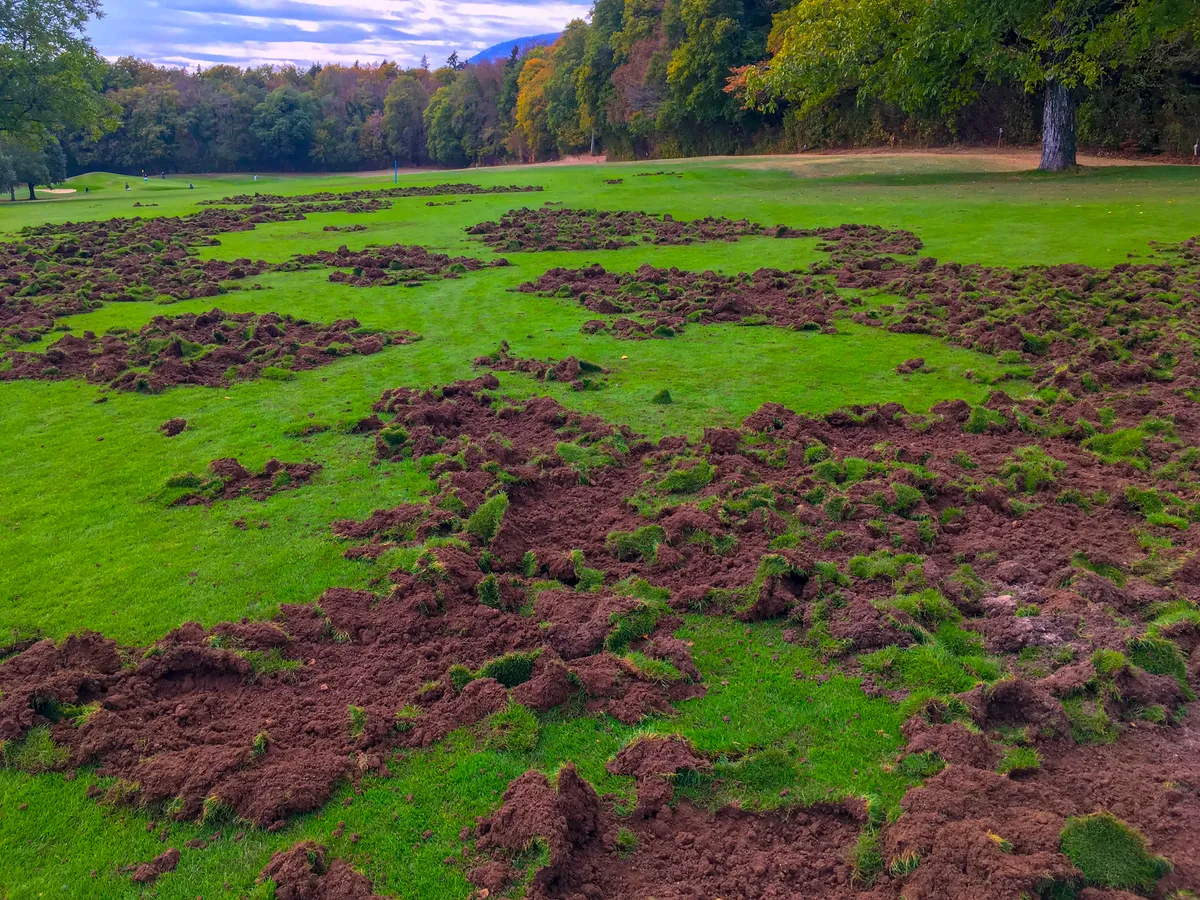
More UK species guides
- Hedgehog guide: where to see and how to help local hedgehogs
- European water vole guide: identification, diet and habitat
- Adder guide: how to identify, what they eat and how to avoid being bitten
- Barn owl guide: how to identify, how they hunt and where to see in the UK
- Red squirrel guide: where they're found, what they eat, and the threats they face
How to identify wild boar poo
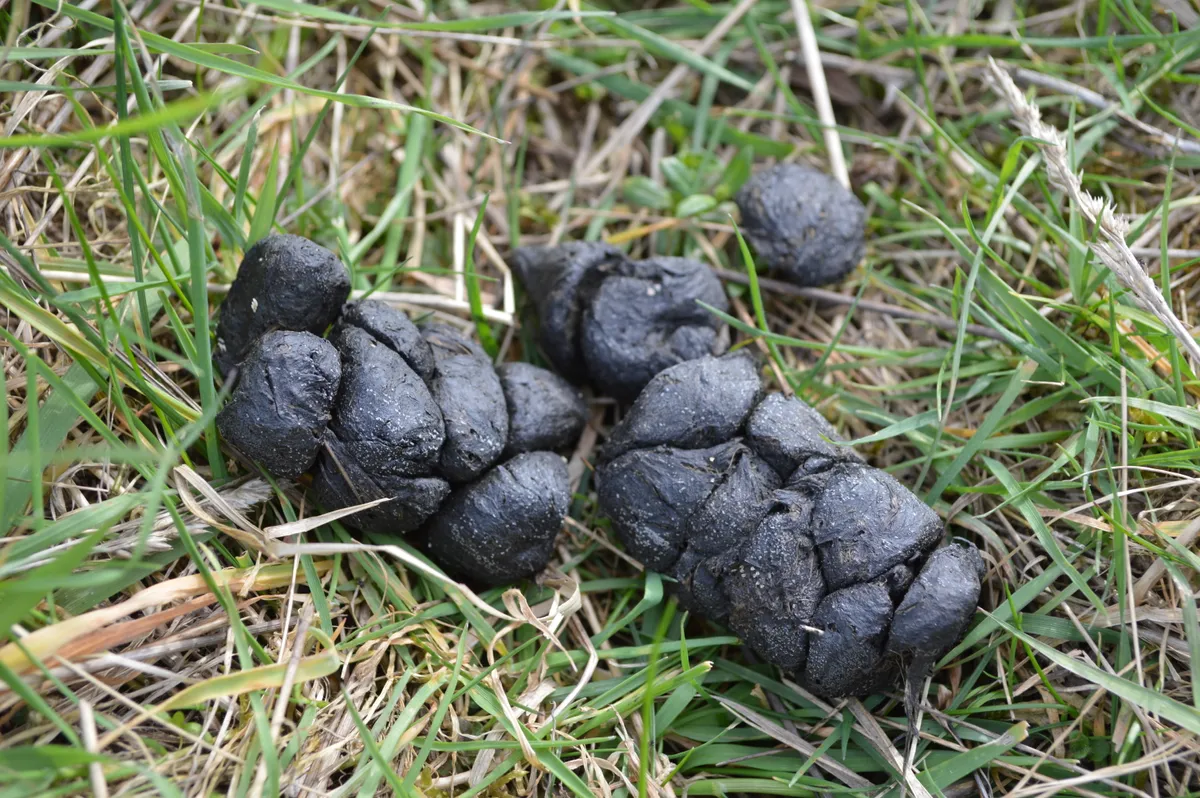
Wild boar make no effort to hide their droppings and like to defecate in communal areas, so if you find one dropping, you’re likely to find a lot more of it close by. It’s excreted in a sausage shape around 10cm in length, with almost brain-like folds. Unlike deer droppings, it often holds together even when dry. Anyone who has passed a field freshly covered in manure will recognise the ammonia-tinged smell.
With plants making up the majority of the wild boar’s diet, the droppings tend to be fibrous if pulled apart. Dung beetles go wild for them, although may be eaten by the boar in turn; I’ve been told by one resident of the Forest of Dean that in summer, boar droppings can sometimes be seen glittering with the shattered carapaces of consumed beetles.
Other surprises lie in wait in the droppings of the boar: as they root through the earth, they can ingest huge numbers of spores of mycorrhizal fungi, organisms that are essential to most plants on Earth. Dispersing these spores is just one of the many ecosystem services that boar perform.
Do wild boar live in families?
Most wild boar live in small social groups called sounders. These consist of two to five reproductive females with their most recent young and surviving subadults from previous litters. The more solitary males are only found in the vicinity of the female groups during the autumnal rutting season when they will fight with other males for access to the sows. Mike Dilger
What are baby wild boar called?
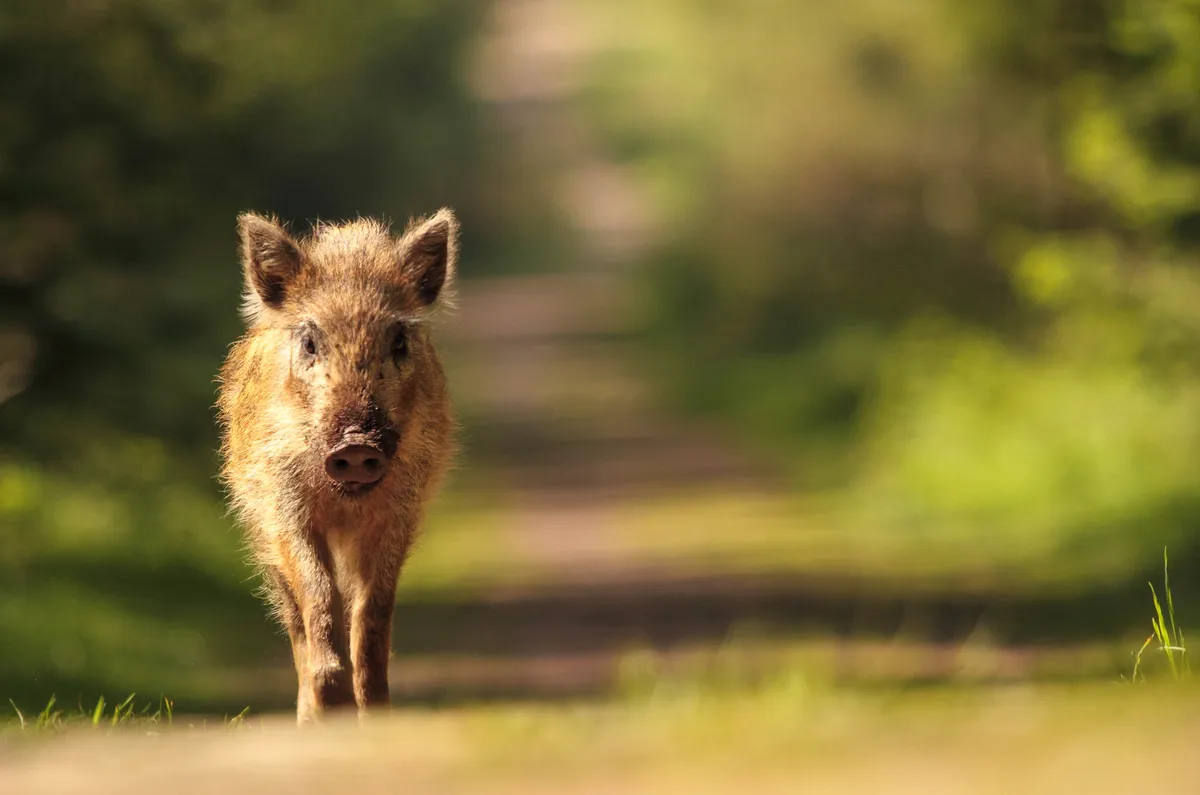
Like domestic pigs, baby wild boar are called piglets. They have longitudinal brown and cream stripes, which are believed to help with camouflage – hence their ‘humbug’ nickname. Mike Dilger
How were wild boar returned to the UK?
Wild boar are thought to have been hunted to extinction here by the end of the thirteenth century. The way for their return was paved by farmers who began importing them from the continent in the 1980s. The small population in Kent and East Sussex was founded by individuals who escaped when the Great Storm of 1987 destroyed the fences holding them.
Over in the Forest of Dean, rumour has it that the first wild boar in 1999 were set free by a bankrupt farmer. More boar appeared there in 2004, apparently under similar circumstances. It’s been claimed that elsewhere, game shooters deliberately released boar.
Establishing new populations is no sure thing, however; those in Devon and Dorset seem to have been snuffed out. They are doing better in areas of Scotland such as Galloway and Inverness-shire where, again, they probably owe their existence both to inadequate fencing and shooters keen for their return.
Please note that external videos may contain ads
Cute Baby Wild Boars | Moose in the Glen | BBC Earth
Are wild boar dangerous?
Wild boar avoid human contact wherever possible, and so will typically flee as soon as they become aware of your presence. While true that a mother will defend her young against what she perceives as a threat, the biologist Martin Goulding has never had a wild boar come towards him during six years spent tracking them. Dog owners, however, should exercise a level of control where boar reside.
As wild boar have no natural predators in Britain, there is a need for control measures to help reduce conflict. In the Forest of Dean, for example, culls by Forestry England are carried out every year to reduce the population to a more manageable figure of about 400. Mike Dilger
Where to see wild boar in the UK
Forest of Dean, Gloucestershire, England
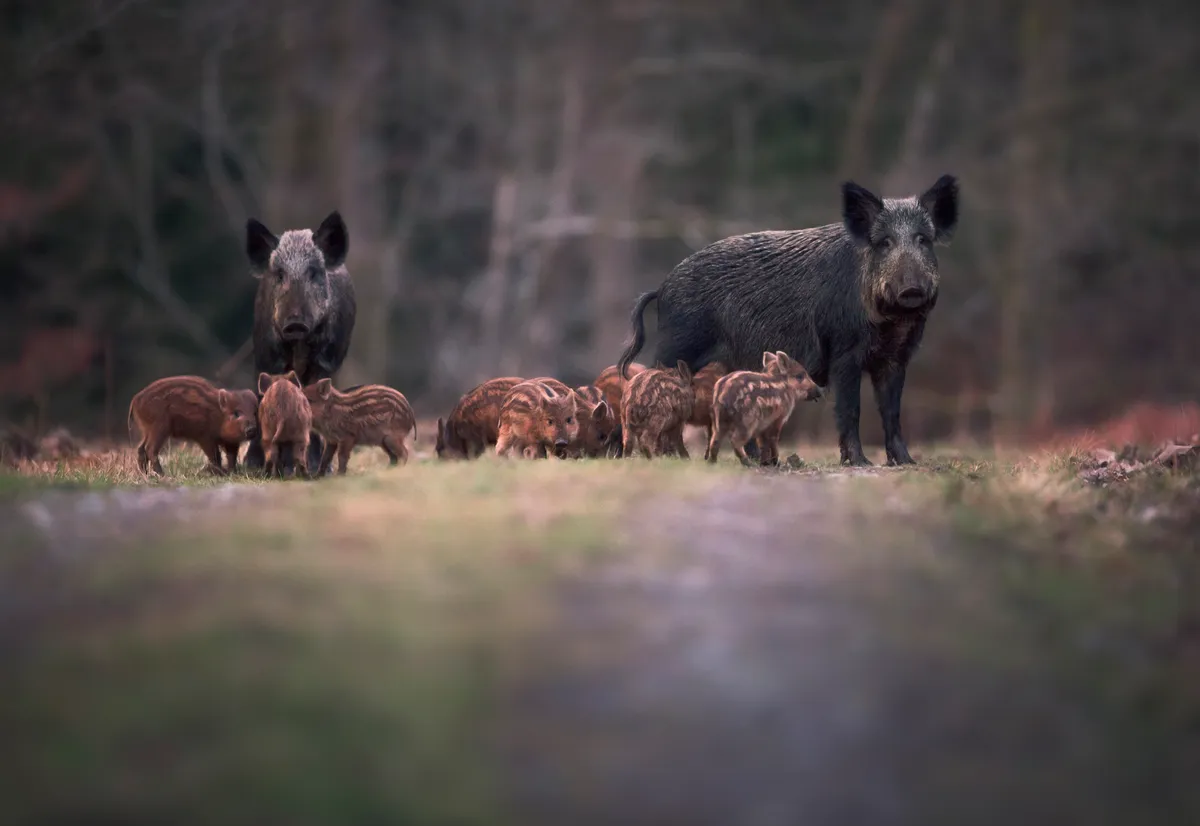
The largest population of wild boar is thought to be found in the Forest of Dean, in western Gloucestershire, a mixed woodland spanning more than 110 square kilometres. The Tudors used the Forest of Dean as one of their hunting grounds, and it was also used as a source of iron and timber.
Dorset, England
Wild boar are established in Dorset, first originating from a now defunct wild boar farm near Bridport with occasional escapees from other farms. The Dorset Mammal Group say the “some populations may not be pure-bred as some farmers cross-breed wild boar with domestic sows resulting in hybrids which retain the appearance of true wild boar.”
Kent and Sussex, England
The Wildwood Trust in Kent claim that “the largest population of wild boar in the UK in Kent/Sussex, is now thought to total around 1,000 animals.” As with other populations, it’s thought that wild boar escaped from farms.
Devon, England
More than 100 wild boar were released from a farm by animal activists in December 2005, and another incident saw 45 more released in February 2006. The boar evaded capture, and have been sighted occasionally since.
Scotland
It’s thought that there could be around 5,000 wild boar in Scotland, and there have been complaints raised by farmers of them digging up fields and attacking livestock.
"They're definitely preying on the sheep on purpose,” said Steven McKenzie, the head keeper at Aberchalder and Glengarry Estate to BBC Radio's Good Morning Scotland programme.
"As we came into the field we saw three pigs. They had encircled a ewe [and] they had her on her back and were quite literally pulling her apart and eating her. I was able to put a shot off and dispatch one of the pigs before the other two disappeared into the forest."
Main image: A wild boar within the Forest of Dean, England, UK. © Getty

